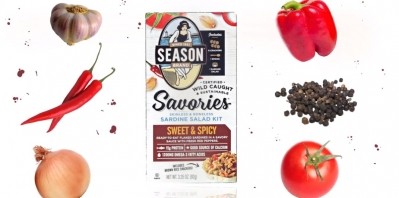Animal-based protein tops consumer choice, but plant-based options are rising fast, Nielsen finds

Meat is a primary source of protein for 78% of Americans and 82% of Canadians, followed by eggs, which 61% of Americans and 63% of Canadians report consuming regularly, according to Nielsen. Dairy comes in third with 58% of Americans and 66% of Canadians choosing it regularly.
This is compared to only 19% of Americans and 20% of Canadians who choose plant-based protein sources of legumes, nuts and seeds regularly, the survey reveals.
However, the data suggests there is a subtle shift occurring, with 22% of Americans and 15% of Canadians declaring they plan to eat less meat and 15% of Americans and 20% of Canadians saying they plan to eat more legumes, nuts and seeds.
Of these three, legumes specifically show significant growth potential as a protein source, Isabel Morales, consumer insights manager for Nielsen Canada, told FoodNavigator-USA.
“Legumes, as an ingredient, are found in over 160 categories across the store, and are posting growth – all indicative that they are increasingly getting to American plates,” she said, adding, “categories like yogurt, ice cream and salty snacks in which legumes are listed as an ingredient are posting dollar growth in the last 52 weeks.”
Beyond just legumes, sales of plant-based, high protein snacks grew 0.5% in dollars across food and beverage in the US, Morales added. “Among those, we have categories like salty snacks with dollar growth of 6%, cookies and crackers 2%, cereal and granola 3% and yogurt 34%.”
This trend likely will continued based on Morales’ observation that 39% of respondents – especially young, multicultural consumers – to the Nielsen survey said they are actively trying to increase consumption of plant-based foods.
In terms of protein, this might mean a lower ratio of it per pound, but some consumers will consider this a fine trade-off, Morales said, explaining: “In another recent study we conducted, we found that only 7% of respondents considered high protein to be an important factor in healthy eating, vs. 15% who said the same about more fruits and vegetables.”
Nonetheless, she says, “plant-based proteins, in general, are providing growth opportunity to manufacturers who are looking into investing and innovating in this space.”
Animal proteins still strong
“Even though consumption of plant-based protein options is increasing, meat is not about to disappear from our grocery shopping list any time soon,” Morales noted.
She explained a number of meat categories continue to post growth, such as fish and seafood. According to Nielsen research, currently only 29% of Americans and 31% of Canadians consider this a top protein source, but 19% of Americans and 20% of Canadians say they want to eat more fish and seafood.
“Also, we see how some attributes fuel dollar growth in specific categories like lunch meats for example,” Morales said, explaining, “while the overall categories is declining in dollars (-2%), segments with claims of antibiotic free, no artificial preservatives and all natural are growing even though they are offered at a higher price point.”
Building on this, she said, “whether plant or animal based, consumers are returning to basics. More natural ingredients and less processed food options are some of the attributes consumers are gravitating towards.”
Following this lead, Morales said, “manufacturers and retailers need to embrace consumer preferences and not be afraid to innovate to meet demands.”
FOOD VISION USA 2017: Where is the plant-based movement heading (and will ‘clean’ meat give it a run for its money)?
Growing interest in plant-based foods, ‘clean’ (aka cultured) meat, and grass-fed, humanely-raised meat and regenerative agriculture, stems from a desire to seek alternatives to industrialized animal production. But where will these emerging segments fit into the market, and are they a threat or an opportunity for traditional meat, egg and dairy companies?
Join Geltor, Hampton Creek, Miyoko's Kitchen, CircleUp, The Good Food Institute and Good Karma Foods at FOOD VISION USA in Chicago this November, when we'll explore what's cooking in the protein arena...


















